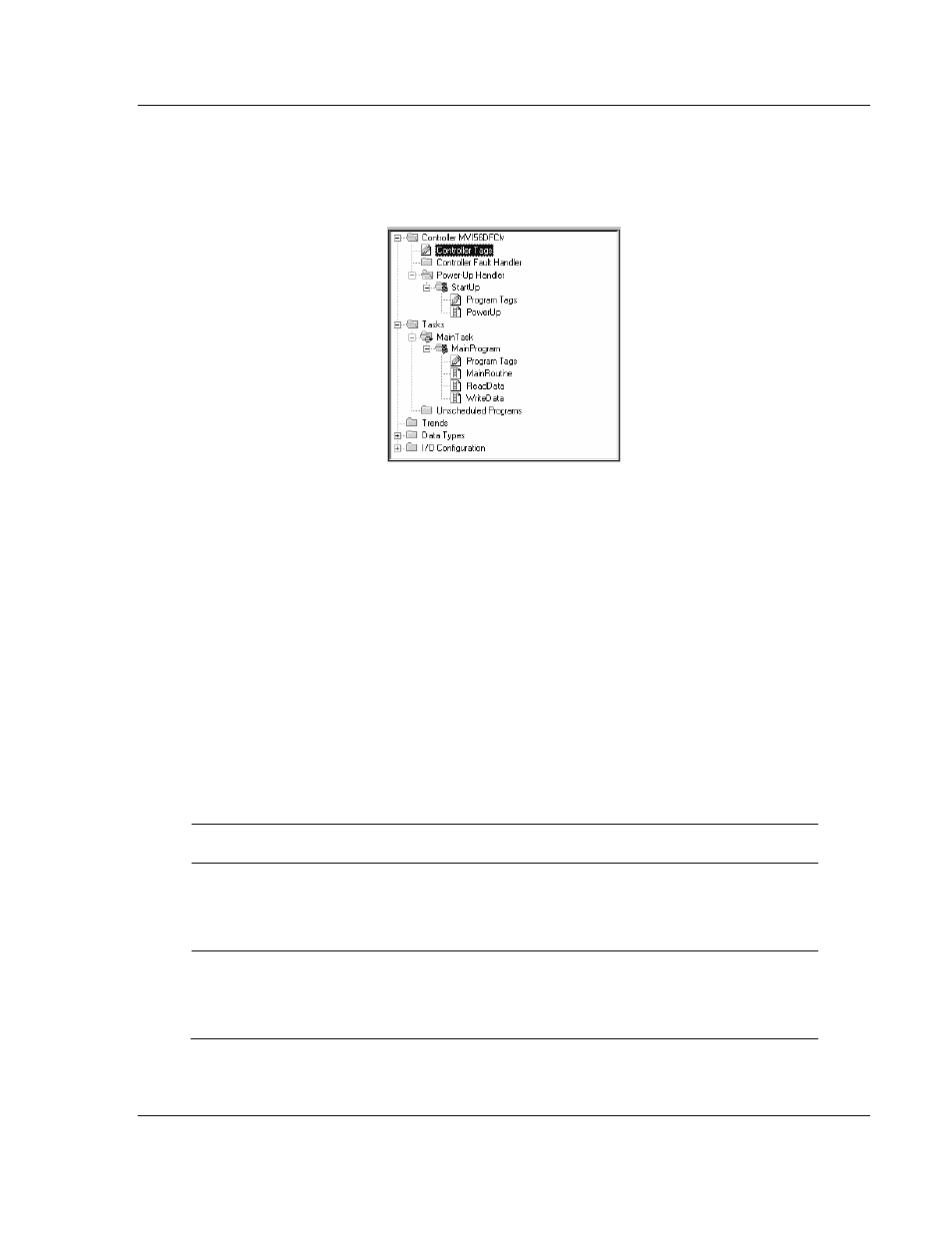Modifying the configuration data, Modifying, Configuration data – ProSoft Technology MVI56-DFCMR User Manual
Page 25

Installing and Configuring the Module
MVI56-DFCMR ♦ ControlLogix Platform
DF1 Interface Module with Reduced Data Block
ProSoft Technology, Inc.
Page 25 of 113
October 20, 2008
The last step in the module setup is to add the ladder logic. If the example ladder
logic is used, adjust the ladder to fit the application. When the ladder example is
not used, copy the ladder logic shown in the Controller Organization window
below to the application.
The module is now set up and ready to be used with your application. Insert the
module in the rack and attach the DF1 serial communication cables. Download
the new application to the controller and places the processor in run mode. If all
the configuration parameters are set correctly and the module is attached to a
DF1 network, the module's Application LED should remain on and the backplane
activity LED (BP ACT) should blink very rapidly. Refer to the Diagnostics and
Troubleshooting section if you encounter errors.
Attach a computer or terminal to Port 1 on the module and look at the status of
the module using the Configuration/Debug Menu in the module.
2.1 Modifying
the
Configuration Data
In order for the MVI56-DFCMR module to function, a minimum amount of
configuration data must be transferred to the module. The following table
provides an overview of the different types of configuration data that the module
will require, depending on the operating modes to be supported.
Block
Range
Functional
Modes Affected
Name Description
9000 Data
Transfer
Backplane
Configuration
This section of the configuration data
contains the module configuration data
that defines the data transfer between
the module and the ControlLogix
processor.
9001
Master and Slave Port 1 Configuration
This section defines the characteristics
of the DF1 serial communication port 1
on the module. These parameters must
be set correctly for proper module
operation.
